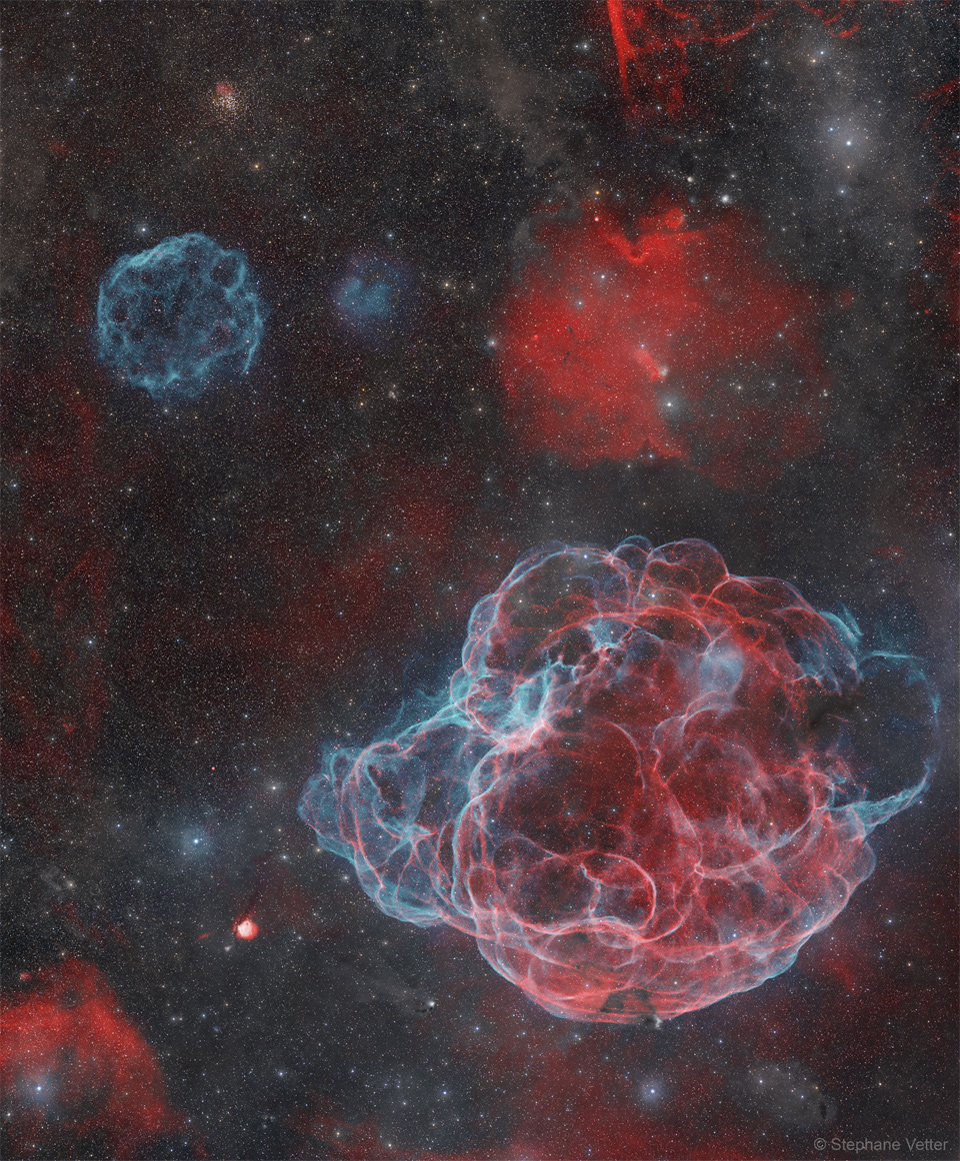Nombre total de pages vues
10/01/2025
SANTé/MEDECINE - A la découverte de l'oreille - Anatomie de l'oreille
ASTRONOMY - Young Stars, Dark Nebulae
2025 January 10
Image Credit & Copyright: Long Xin
Explanation: An unassuming region in the constellation Taurus holds these dark and dusty nebulae. Scattered through the scene, stars in multiple star systems are forming within their natal Taurus molecular cloud complex some 450 light-years away. Millions of years young and still going through stellar adolescence, the stars are variable in brightness and in the late phases of their gravitational collapse. Known as T-Tauri class stars they tend to be faint and take on a yellowish hue in the image. One of the brightest T-Tauri stars in Taurus, V773 (aka HD283447) is near the center of the telescopic frame that spans over 1 degree. Toward the top is the dense, dark marking on the sky cataloged as Barnard 209.
09/01/2025
SANTé/MEDECINE - A la découverte de l'oreille - La structure de l'oreille
AERONAUTIQUE - La grande épopée des ballons dirigeables - 1932 : l'USS Macon
ASTRONOMY - Peculiar Galaxies of Arp 273
2025 January 9
Image Credit & Copyright: Dave Doctor
Explanation: The colorful, spiky stars are in the foreground of this image taken with a small telescope on planet Earth. They lie well within our own Milky Way Galaxy. But the two eye-catching galaxies in the frame lie far beyond the Milky Way, at a distance of over 300 million light-years. The galaxies' twisted and distorted appearance is due to mutual gravitational tides as the pair engage in close encounters. Cataloged as Arp 273 (also as UGC 1810), these galaxies do look peculiar, but interacting galaxies are now understood to be common in the universe. Closer to home, the large spiral Andromeda Galaxy is known to be some 2 million light-years away and inexorably approaching the Milky Way. In fact the far away peculiar galaxies of Arp 273 may offer an analog of the far future encounter of Andromeda and Milky Way. Repeated galaxy encounters on a cosmic timescale ultimately result in a merger into a single galaxy of stars. From our perspective, the bright cores of the Arp 273 galaxies are separated by only a little over 100,000 light-years.
08/01/2025
ASTRONOMIE - Galaxies - NGC 4603
ASTRONOMY - Supernova Remnants Big and Small
2025 January 8
Image Credit & Copyright: Stéphane Vetter (Nuits sacrées)
Explanation: What happens after a star explodes? A huge fireball of hot gas shoots out in all directions. When this gas slams into the existing interstellar medium, it heats up so much it glows. Two different supernova remnants (SNRs) are visible in the featured image, taken at the Oukaïmeden Observatory in Morocco. The blue soccer ball-looking nebula toward the upper left is SNR G179.0+02.6, which appears to be the smaller one. This supernova, about 11,000 light years distant, detonated about 50,000 years ago. Although composed mostly of hydrogen gas, the blue light is emitted by a trace amount of oxygen. The seemingly larger SNR, dominating the lower right of the frame, is the Spaghetti Nebula, cataloged as Simeis 147 and sh2-240. This supernova, only about 3,000 light years away, exploded about 40,000 years ago. Comparatively, even though they appear different sizes, both supernova remnants are not only roughly the same age, but about the same size, too.
07/01/2025
ASTRONOMY - A New Year's Aurora and SAR Arc
2025 January 7
Image Credit & Copyright: Alessandra Masi
Explanation: It was a new year, and the sky was doubly red. The new year meant that the Earth had returned to its usual place in its orbit on January 1, a place a few days before its closest approach to the Sun. The first of the two red skyglows, on the left, was a red aurora, complete with vertical rays, caused by a blast from the Sun pushing charged particles into Earth's atmosphere. The second red glow, most prominent on the far right, was possibly a SAR arc caused by a river of charged particles flowing across Earth's atmosphere. Although both appear red, the slight color difference is likely due to the aurora being emitted by both oxygen and nitrogen, whereas the higher SAR arc was possibly emitted more purely by atmospheric oxygen. The featured image was taken on January 1 from near Pieve di Cadore in Italy.
06/01/2025
AERONAUTIQUE - La grande épopée des ballons dirigeables - 1904 : Baldwin's Airship
ASTRONOMIE - Les plus beaux astres de la Voie Lactée - Saturne et ses anneaux
LES BELLES INVENTIONS DE LEONARD DE VINCI - La grue à plateforme annulaire
Voici un exemple d'une des machines de levage conçues par l'ingénieur Léonard de Vinci . Il s'agit d'une grue à plateforme a...

-
2022 September 26 All the Water on Planet Earth Illustration Credit: Jack Cook, Adam Nieman, Woods Hole Oceanographic Institution ; Data ...
-
2025 May 11 The Surface of Venus from Venera 14 Image Credit: Soviet Planetary Exploration Program , Venera 14 ; Processing & Copyri...









